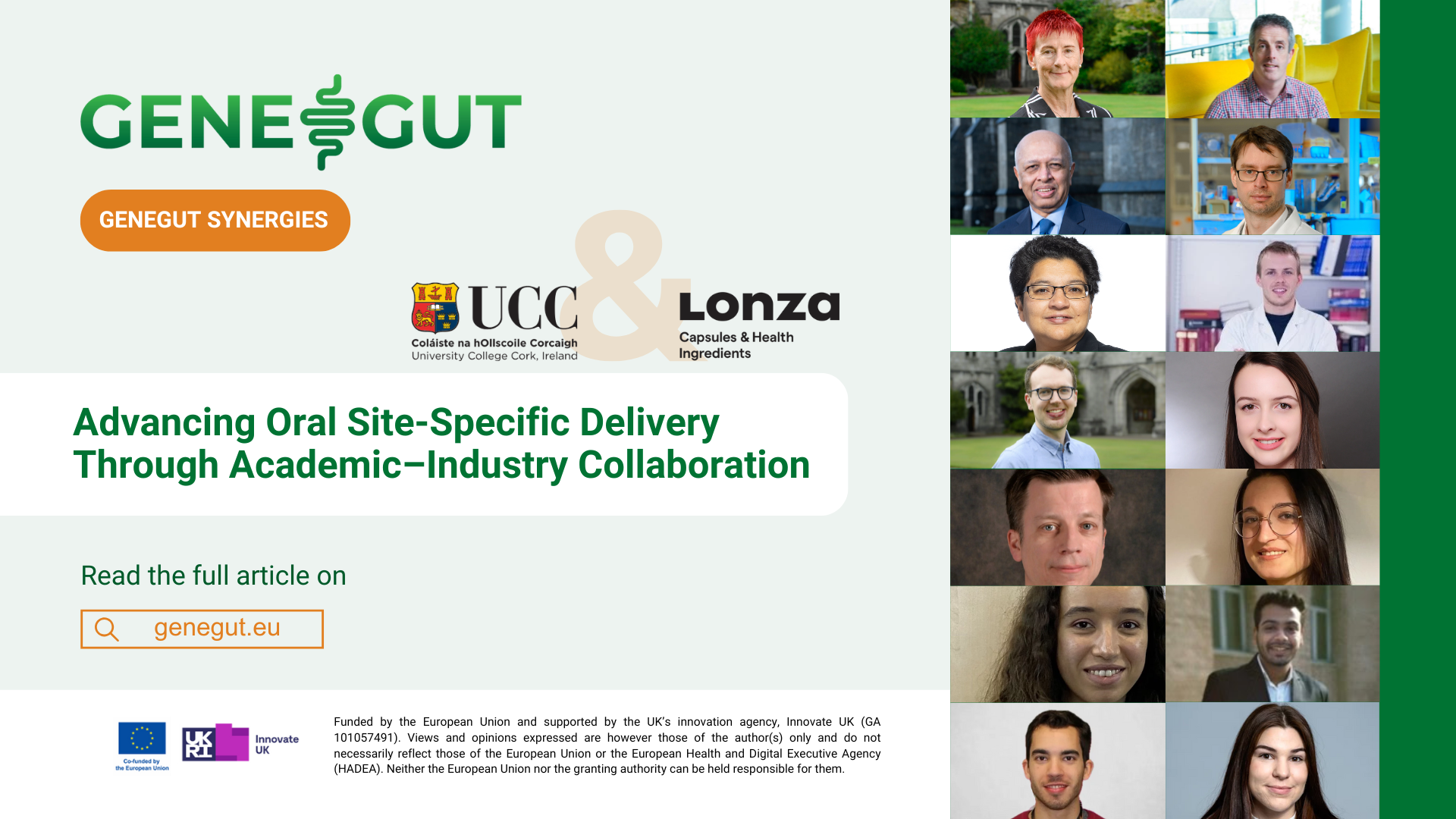Crohn’s disease is a chronic, relapsing inflammatory bowel disease1. Despite advances in biologics1, current treatments are often delivered via injection, which can be associated with systemic side effects and reduced patient adherence2. The development of oral therapeutics represents a patient-friendly alternative, offering localised treatment directly at the site of inflammation, while minimising systemic exposure3.
UCC and Lonza in GENEGUT
The GENEGUT project exemplifies the strength of academic–industry collaboration, bringing together Lonza Capsules & Health Ingredients (Lonza) and the drug delivery group in the School of Pharmacy at University College Cork (UCC). The collaboration highlights the unique synergy between the two partners, focused on designing a delivery platform that ensures targeted release of RNA therapeutics in the terminal small intestine – a key site of inflammation in Crohn’s disease4.
Lonza brings decades of experience in capsule formulation, leading the design and development of a site-specific bilayer drug delivery system. In this collaboration, Lonza provides access to specialised capsule technologies and manufacturing insights, enabling the formulation of enteric and delayed-release systems. Modifying the release profile of the capsule is critical for ensuring protection of the RNA-loaded nanoparticles during passage through the stomach and upper small intestine, to ensure targeted release to the terminal small intestine.
UCC complements this work with its expertise on nanoparticle formulations and in vitro and in vivo testing. The team plays a central role in evaluating the delivery system under biorelevant conditions that simulate the gastrointestinal tract of Crohn’s disease patients. UCC also integrates complementary research on nanoparticles and capsule-based delivery, performing critical tests on stability and uptake. This comprehensive approach ensures that both components of the delivery system, capsule and nanoparticles, are evaluated in tandem for optimal performance. Furthermore, UCC is assessing the site-specific release in physiologically relevant preclinical models, providing essential insights into the system’s real-world translation.
Impact of the Collaboration
This partnership enables an iterative development process, where formulation design is continuously informed by in vitro and in vivo performance. The integration of industrial manufacturing capabilities with preclinical testing ensures that promising candidates are not only effective but also scalable and practical for clinical translation.
The collaboration fosters a continuous exchange of knowledge and skills, allowing both partners to mutually expand their capabilities. The outcomes of the partnership will not only benefit the GENEGUT initiative, but can drive innovation, bridge fundamental research with practical application, and ultimately contribute to the development of more effective and patient-centric treatments for diseases such as ileal Crohn’s disease. It sets a precedent for future academic–industry partnerships aiming to bring advanced drug delivery systems from bench to bedside.
References
- Torres, J., Mehandru, S., Colombel, J. F. & Peyrin-Biroulet, L. Crohn’s disease. The Lancet 389, 1741–1755 (2017).
- Brayden, D. J. Localised Delivery of Macromolecules to the Large Intestine: Translation to Clinical Trials. BioDrugs 36, 687–700 (2022).
- Hua, S. Advances in oral drug delivery for regional targeting in the gastrointestinal tract – Influence of physiological, pathophysiological and pharmaceutical Factors. Front Pharmacol 11, (2020).
- Caprilli, R. Why does Crohn’s disease usually occur in terminal ileum? Journal of Crohn’s and Colitis vol. 2 352–356 Preprint at https://doi.org/10.1016/j.crohns.2008.06.001 (2008).
This article was prepared by Sophia Hoffmann (UCC) and Elisa Millet (Lonza).
Stay tuned for more stories on the GENEGUT Synergies!
Follow us on LinkedIn for more project updates.


